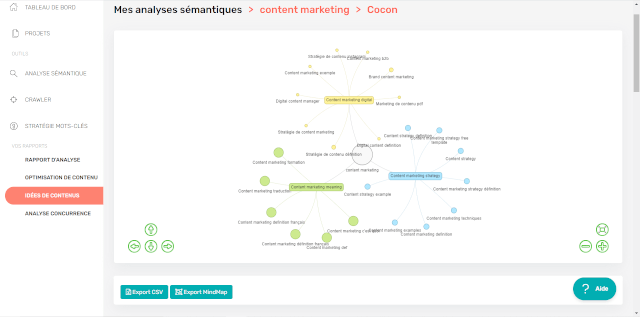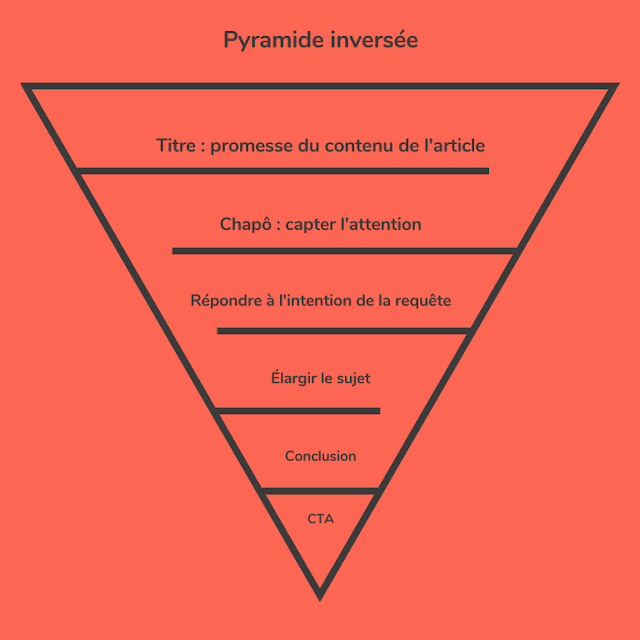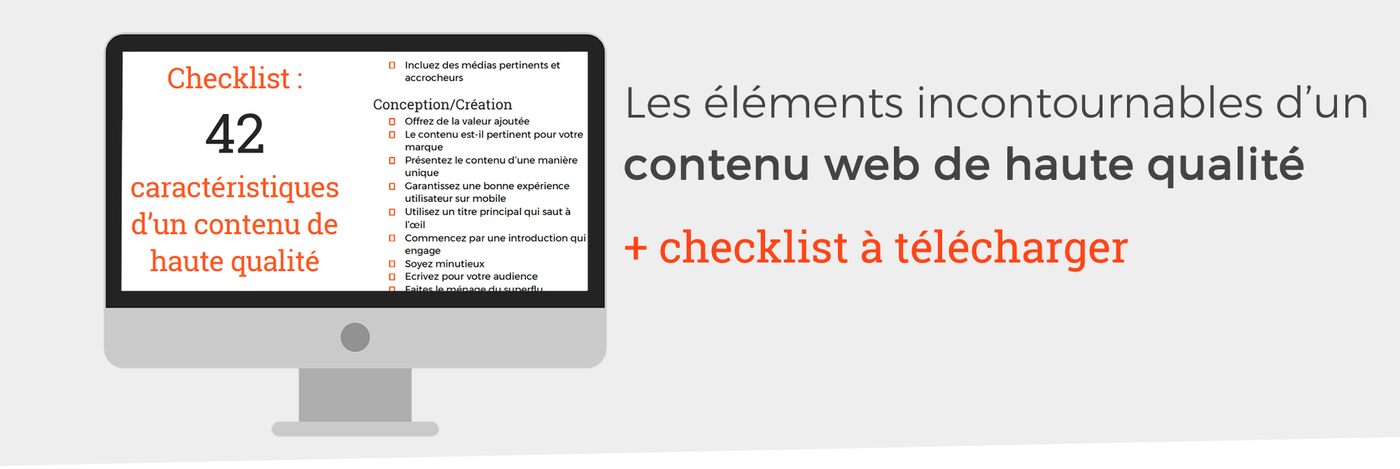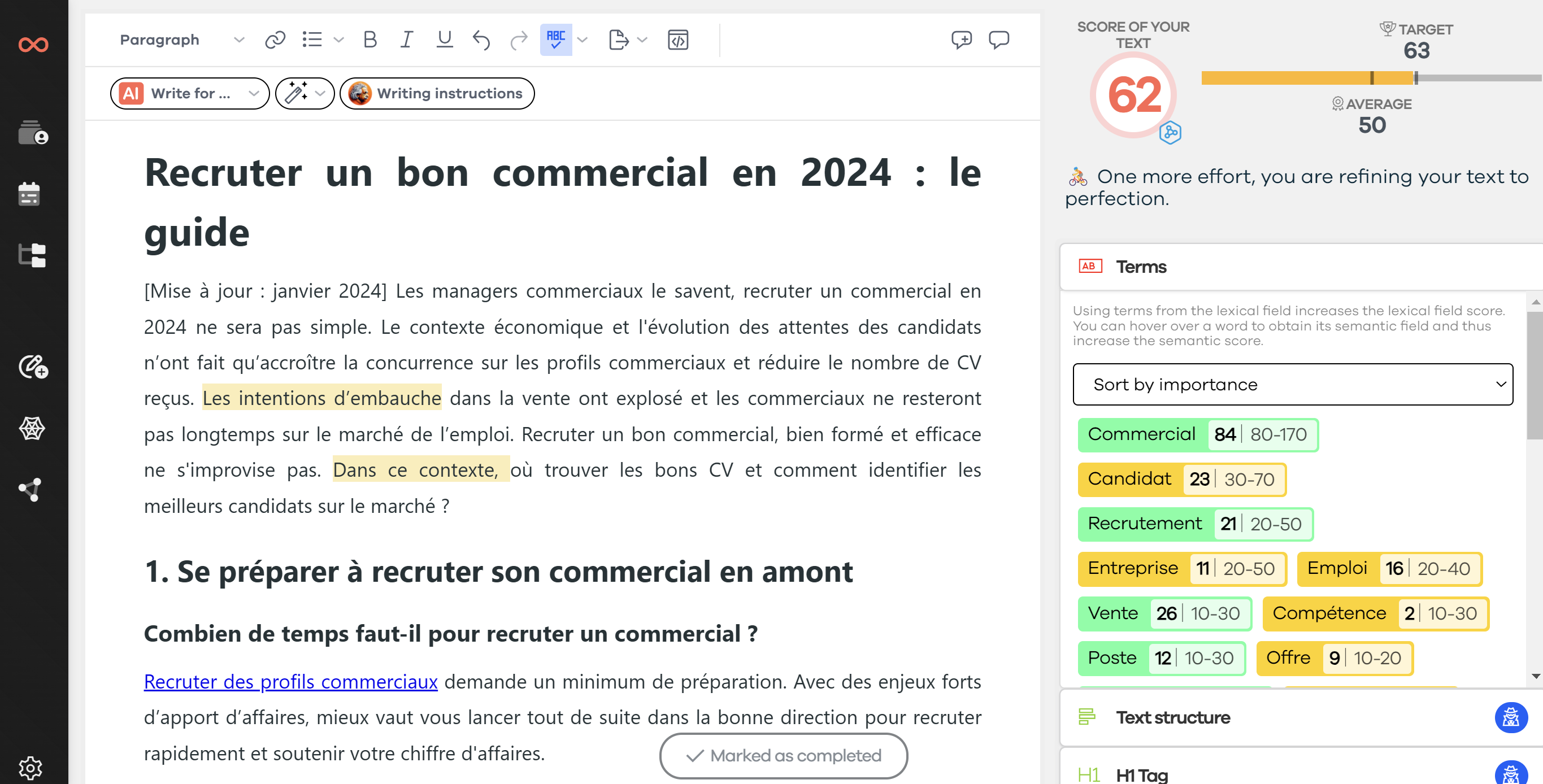When it comes to web copywriting, a content marketing strategy and effective SEO (search engine optimization) are essential. Google considers over 200 ranking factors when displaying SERPs (search engine results pages), and one of the three pillars of SEO is content.
For a copywriter, a brand, what does quality content mean? Not all content is equal, and each search engine has its own definition of "quality." The SEO community continues to devote significant time and energy to experimenting and studying organic search results to understand what Google prefers. But how do you start with web copywriting? How do you succeed in web copywriting and write quality content?
I have compiled the most recent, reliable studies and added some suggestions from my experience. I focused solely on web content writing. For promotion (including SEO), you can check out the article on SEO copywriting tips.
Here are the 42 rules for quality web copywriting grouped into 5 main parts:
🎯 Good web copywriting starts with a content strategy
Good content cannot be designed without a strategic vision and effective content marketing. The strategy begins well before the first word is typed into a search engine, thanks to the persona or avatar, keyword research, and search intent, and the buyer engagement cycle.
1. Determine the RankBrain factors for your industry
Not all ranking factors are equal. Google's machine learning, RankBrain, analyzes user behavior to understand how to provide the best results for each query. For example, links are more important in some industries than others. Content freshness is paramount for some sectors, but irrelevant in others. Ask yourself: what is important for your audience and your industry?
Google RankBrain: What impacts does it have on optimizing your site's SEO? - Conseilsmarketing
2. Analyze the keyword/user intent pair
Keywords are how your personas communicate with search engines and how they talk about your industry. User intent is what they really want when they type keywords into search engines. Choosing the right keywords to meet users' needs should be the goal of your web copywriting.
Optimizing keywords doesn't matter. Focus on user needs - Wearethewords
3. Develop your topic clusters
Now that you have analyzed your main keywords, you want to answer all the questions your readers have. At the same time, your goal is also to demonstrate your expertise to Google to improve your organic ranking. To achieve this, the most commonly used strategy by SEO professionals is to cover an entire topic in the form of a topic cluster. To do this, it is best to hire a professional or use an online tool.
Semi-automatic topic cluster tool - SEOQuantum

4. Study your personas
Marketers and copywriters cannot begin to create effective content unless they know who they are addressing. To define your personas, you will first try to answer the following questions. What are they asking? What do they need? What kind of difficulties do they encounter? What catches their attention? How do they use search engines?
Defining your marketing personas: key steps & uses – Deux.io
5. Define your visitor's buying journey
Whether it's selling training, a product, or a service, you want to naturally guide your reader to your sales pages. You can have multiple buying journeys if you have more than one persona, but all the text you write should serve one of these journeys. Describe a buying journey for each customer and decide where existing content fits. Then, optimize what you have and create new content to fill the gaps.
Creating relevant content throughout the customer journey – trustpilot
6. Organize work using a content calendar
Once you know all the topics you will cover and the perspective you will take, your next step is to group everything into a content calendar. First, this document allows you not to lose sight of the objective of your content strategy. Moreover, you can organize tasks efficiently, and your copywriters can rely on this file to optimize their work.

🧩 Quality web copywriting is structured
A web copywriter must be able to write and structure text correctly to make it as appealing as possible to read.
7. Make your texts easy to read
Writing for the web requires adaptation compared to writing on paper. Your content must be enjoyable to read on various digital devices. Moreover, your reader can easily be distracted by other factors, especially when reading on a mobile device (calls, notifications, etc.). A good web copywriter writes short sentences while trying to address only one idea per sentence. Additionally, they space out their text as much as possible (line breaks, paragraphs, bullet points, and numbered lists) to make reading enjoyable even on the smallest screens.
8. Organize sub-sections by keyword
Keyword research should help web copywriters structure comprehensive content. Google understands related keywords to a main intent, placing them in subtitles is a clever and effective way to structure your web copywriting.
How to place keywords in a website? - Axenet
9. Help the user accomplish a task
Each element of your web copywriting should address a pain point or help the user perform a task. Make sure to guide them from start to finish in solving their problem. The most commonly used technique by web copywriters is the 5 W rule. The goal is to answer your reader's questions in a structured way.
- Who: who is your text for?
- What: what is the topic being discussed?
- When: when is the proposed solution appropriate?
- Where: in what situation are the proposed pieces of information relevant?
- Why: what are the results of your proposal?
10. Get to the point
You are certainly not the first to offer content on a topic, service, or product. To capture your reader's interest and prevent them from looking elsewhere, web copywriting follows a structure quite different from what is taught in schools: the inverted pyramid. The web copywriter must absolutely take care of the introduction (also called the lead), then get to the heart of the matter as soon as the first subtitle. If the user does not identify with the content or quickly find an answer to their problem, they will immediately return to Google.

11. Be thorough
Long-form web content (over 700 words) tends to correlate with higher search engine rankings. This is because long text tends to comprehensively and ingeniously address a problem. Word count is not a recommendation, but thoroughness is.
What is the ideal length for your blog articles? – Href.fr
12. Don't stray from the main topic
Be thorough, but be useful. Above all, don't get distracted! Content strategy is general, and your content writing is focused on a single topic. Moreover, you will benefit from having set up your topic clusters to write a large number of content pieces that will cover the topics discussed in their entirety.
13. Add a next step to your content
CTAs (call to action) and/or the next steps in the journey are necessary. If a user does not find what they expect from your web copywriting, alternatives can save the visit and the brand's reputation. This also avoids pogosticking. If a user finds what they are looking for, further reading and the next steps in the buying journey can continue the conversation (and create positive SEO signals).
Definition: What is pogosticking? - Abondance
14. Write for the right audience
This is a simple tip, but don't lose sight of it when writing for the web. It's easy, for example, to complicate a text and saturate it with technical jargon, but if your target audience is made up of executives, you lose attention and the visitor. The reverse is also true: make sure your topics are specific and that your vocabulary is accurate if your audience is.
15. Content can be skimmed
Many users scan content before reading it. Be clear. Hierarchical headings, short paragraphs, and images make content easy to scan. Headings and subheadings are strategic. Make sure they are well-written and concise to create an overview of the entire content.
16. Link internally to useful resources
In addition to links to next steps and calls to action (CTAs), include links to other internal resources providing more details or explanations on related topics.
17. Link externally to useful content
Your brand is not the only one talking about these topics and ideas, and Google knows it. Demonstrate the breadth of your expertise by linking to other well-documented content that can support your web copywriting.
18. Include relevant and eye-catching media
Images, videos, interactive content, GIFs... Users love them! Just make sure the media files are not too large to slow down the loading speed. Format images before uploading: they should only be as wide as the content. File sizes should be under 150 KB. You can find GIFs or images in the following banks:
- Giphy
- Pixabay
- Unsplash
19. Offer added value
Writing something that has already been written a dozen times is never great content. Unless you have something unique to offer, don't write content. Moreover, remember that your organic SEO will be penalized if you offer duplicate content. So, provide freshness and added value to your texts to satisfy your readers and search engines. You can, for example, write an FAQ, detail a specific case, or share feedback.
20. Is the content relevant to your brand?
Make sure the text to be written is relevant to your business. As tempting as it may be, stay focused on your industry. First, because your audience is probably not interested in off-topic content, and the brand will lose credibility. Second, because your content works together to create authority on a subject with search engines, so don't step out of line!
21. Present content in a unique way
In addition to unique value, create a unique experience. If your competitors only do textual content, format your content as an infographic. If images are common, create a custom video. Be different!
22. Ensure a good mobile user experience
Beyond passing a mobile-friendliness test, make sure the content you write works on a mobile screen. Images should be centered. Buttons and links should be large enough for thumbs.
Here are some tips for adapting your content for small screen reading:
- structure your content (subheadings),
- shorten your sentences (less than 20 words),
- space out your text (paragraphs and line breaks),
- simplify reading (bullet lists),
- relax concentration (photos and videos).

Here is a list of adjectives that can characterize quality content. Each of your web copywriting pieces should use as many as possible:
23. Unexpected
Surprise your audience with something delightful or provocative, as long as it reinforces brand authority. Don't surprise them with bland or superficial content.
24. Educational
The web is full of very short content, but content that ranks well and has good links teaches.
25. Inspiring
Writing inspiring web content is not about creating the right formula, but rather understanding what already inspires your audience and using it to communicate your message.
26. Credible
Demonstrate the brand's experience and establish a connection with reliable sources to support your claims.
27. Emotional
If you want your audience to remember the content, evoke a strong emotion. Make them laugh, make them cry, or make them angry.
28. Entertaining
The content itself can be entertaining. If you can't write entertaining textual content, use videos, quizzes, etc. Keep your audience's attention!
29. Practical
Good quality content considers its audience and their practices. Provide solutions that are achievable for your target.
30. Credible
Your web copywriting must be credible. Demonstrate your expertise and experience. Tell users when you failed and how you overcame that challenge. Talk to them about yourself.
31. Actionable
Help the reader get to work. Knowledge and practice are good teachers, go further in your content and show them how to take action.

🏢 Good web copywriting is well-designed
The structure of your content is crucial for offering attractive and enjoyable reading!
32. Use a main title that catches the user's eye
Find an unexpected, evocative, and inspiring main title. It gives credibility but also attracts clicks and readers. Numbers are effective (e.g., "7 amazing ways," "9 best tips," etc.).
How to write an effective and impactful editorial title? - anthedesign
33. Start with an introduction that engages the user
Before your texts, there is your title. And between the two, there is the introduction! The first lines of your page must encourage the user to spend time on your content. Many content writers focus on the body of the content and neglect the introduction. If your reader never gets past a boring first paragraph, the rest of the content doesn't matter.
To write a good introduction, I often use the AIDA method:
- "A" for attention: impactful first sentences,
- "I" for interest: effective and/or innovative solution,
- "D" for desire: make them want to know more,
- "A" for action: push for action
4 simple ways to write a captivating introduction - Mohamed Samir Lechheb
34. Clean up
Most good copywriters will tell you that they remove many words. Write raw web content first, but then dedicate at least one revision to removing any word, sentence, or paragraph that adds no value to your content.
35. The content has been checked
On the internet, fake news is rampant. Don't get caught quoting bad information. Check, check!
36. Show the user what they want to see
You are already organizing your text with sub-sections for each secondary keyword. But readers like to see their questions, needs, and answers in capital letters or bold.
37. Contribute to the brand's story
Assuming your text is relevant, it contributes to the brand's story, so make sure to specify how.
Complete storytelling guide | 12 copywriting tips - Seoquantum
🔗 Quality web copywriting is shareable
Your copywriting masterpiece is ready! One of the three main features of SEO engagement is that the text is popular. Make your web copywriting visible.
38. Share on brand social media
Tweet it. Post it. Ask your friends and employees to share it. Make sure the content is ready to display perfectly on social networks. The Yoast SEO plugin can help if the site is on WordPress.
39. Highlight your share buttons
Make sure social buttons are easy to find and simple to use on your content.

👨💻 High-quality content relies on clean technology
Most technical considerations related to SEO concern the entire site, but there are some techniques to check for each content piece.
40. Use the sitemap
The sitemap is a file that contains all the URLs of your site's pages to facilitate the indexing of pages by search engines. You are sending your XML sitemap to Google, aren't you?
Generate a sitemap for natural referencing - Yakaferci
41. Load your web content quickly
Three seconds is the time the average mobile user will wait for content to load, and since mobile-first indexing is current, three seconds are all you have. Make sure the new copywriting page is not slower than 3 seconds.
7 tips to increase a site's loading speed – 1ère position
42. Properly linked from the site
To write good web text, you must always think about internal linking. The links in your content that redirect to other pages on your site represent the backbone of your SEO. However, it is essential to set up an internal linking strategy for this process to be as effective as possible.
Indeed, the consistency between linked pages is essential, both for your reader and for Google's robots. By intelligently working on this SEO factor, you benefit from the following advantages:
- your readers enjoy easy and informative navigation,
- your traffic stays longer on your site,
- a logical and coherent structure,
- sharing of SEO juice pushing your most important pages,
- improved indexing robot crawling,
- highlighting your main keywords.
Is the future of SEO the keyword clustering? - Seoquantum
The web copywriting rules I have just proposed are all based on in-depth studies or my extensive experience. If you want to become a web copywriter or are starting in this profession, you will need to put this information into practice. You can, for example, sign up for copywriting platforms or offer your services for guest articles.
Although a web copywriting training is the best way to learn everything you need to know about the specifics of writing for the internet, nothing will replace your experience.
To succeed, always remember how you feel when you read content on the web and always think about the intentions of your readers. Develop your topics to fully answer the questions users have and structure your texts to keep users on your site.
If you want to learn more about ways to improve your web copywriting, I suggest you read the following article: https://www.seoquantum.com/billet/intention-recherche.
Need to go further?
If you need to delve deeper into the topic, the editorial team recommends the following 5 contents:

